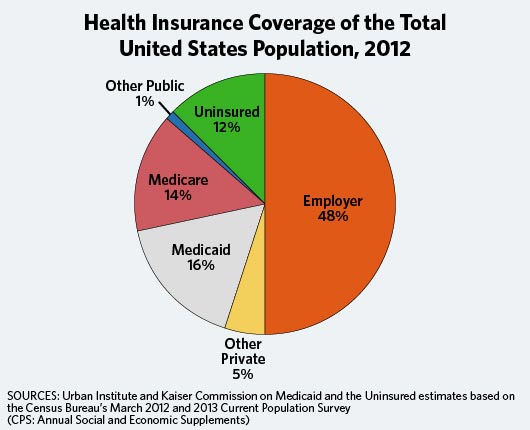Among the first questions asked when the subject of the countries healthcare is how much is spent to provide the service. The second question is who is paying. In the US healthcare system, that answer is somewhat complicated. The system is something of a hodgepodge of private and public funding chock full of subsystems and rules most people don’t really understand. The purpose of this blog is to elucidate, if only a little, who is paying for your doctor visits.
During an overview of my group’s concept map, it became apparent that a great deal of focus is spent on healthcare resources, namely in the form of money. So, who is the payer? Where does the money come from and go? In a sense, there is only one payer for healthcare; you. However, this is not a direct connection. Simply put, both here in the US and abroad, citizens pay someone to pay the clinic, hospital or physician. According to this site, most health providers are paid through Medicaid, Medicare, and/or private insurance. This means that the government is, in fact, the largest payer of healthcare since Medicaid and Medicare are both government-funded. The next highest payer is according to the same site is private insurance.
Looking a little closer at government-funded healthcare, Both Medicare and Medicaid are overseen by the CMS or the Centers for Medicare and Medicaid Services. This organization is a branch of the Department of Health and Human Services and is also tasked with overseeing the Medicaid programs of each state. According to the same source, these programs are funded by two trust funds; the Hospital Insurance Trust Fund(HI) and the Supplementary Medical Insurance Trust Fund(SMI). The HI is funded by payroll taxes, trust fund taxes, and income taxes. SMI is funded by Congress and Medicare Part B premiums.
The above graphic depicts a breakdown of insurance coverage for the US population. The first thing to note is that both Medicare and Medicaid are in fact insurance plans. This would imply that US healthcare is heavily insurance-based when taking both government and private funding into account. After all, a good 84% of the population is insured. The second thing to notice is the extent of private insurance. According to the above graphic and a study on insurance coverage for Americans, private insurance is much more prevalent, with employer-based insurance covering ~50% of all insured citizens.
It must be said that in the quest to improve the healthcare system, it is often overlooked that healthcare and health insurance are two different things. However, they are tightly bound in the United States, as nearly the entirety of the system is funded through some insurance provider or another. As stated before, the US government does pay the most in the healthcare system. Yet, most citizens aren’t insured by the government but by their employer. As such, any effort to address healthcare must also address health insurance and its role in the system.

I enjoyed this blog, but I wish you would have went more into detail about the difference between healthcare and health insurance. Here’s a link I think will help you in explaining this further. https://www.griffinbenefits.com/employeebenefitsblog/healthcare-vs-health-insurance-why-the-difference-matters
This link not only defines both terms, but also explains why they are important.
This was an inquiry.
Thank you for the feedback! You make a good point that it would have been worthwhile to elaborate on the difference between healthcare and health insurance. Sadly, I did not believe that difference to be pertinent to my blog and that it would be best served with its own blog. Your link will be very valuable to that end.